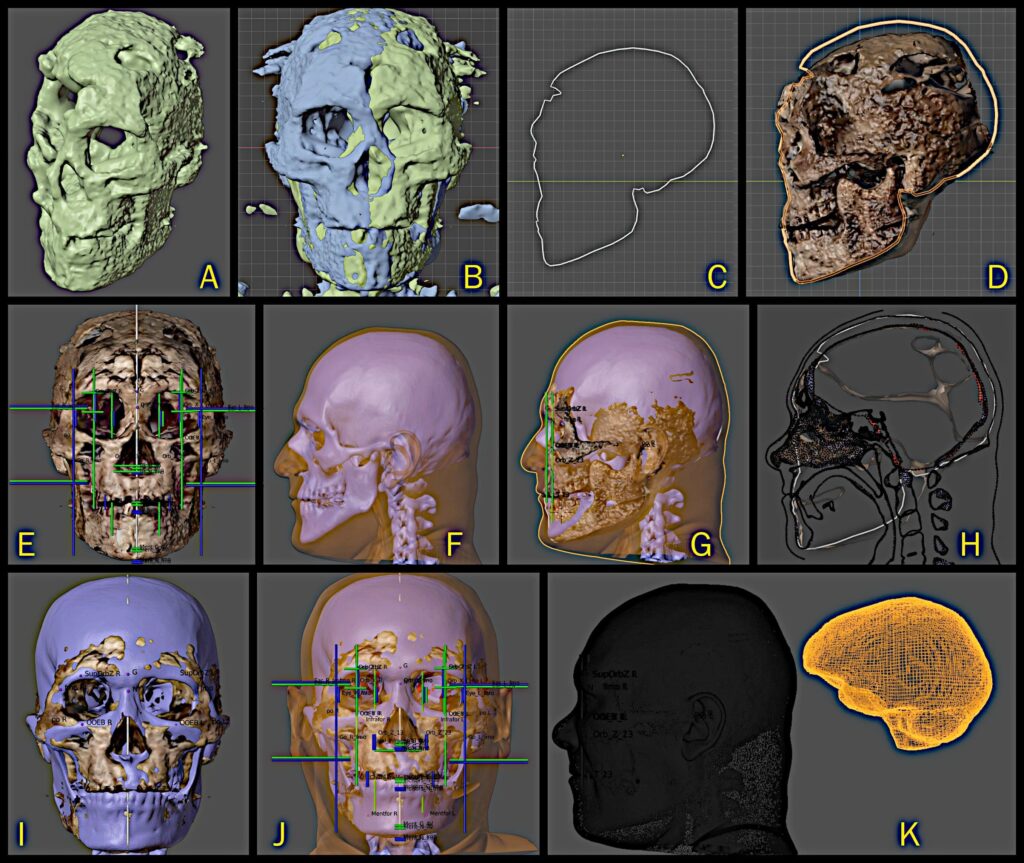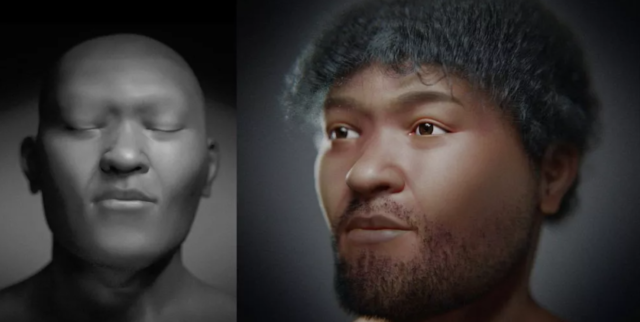A man with African descent passed away in what is now Egypt some 35,000 years ago. This Egyptian man lived 32 millennia before the first known pharaoh, yet no one knows who he was or what kind of culture he was a part of. When his remains were discovered more than forty years ago in Nazlet Khater 2, an archaeological site in Egypt’s Nile Valley, the only artifact left behind was an ax that had been discovered beside him.
Although we don’t know his life, this man’s death is one of the most important records of archaeology. Because this Egyptian man, who was 1.80 meters tall and between the ages of 17 and 29, was the oldest known Homo sapiens skeleton in Egypt and one of the oldest in the world. Apart from that, the skull is surprisingly undamaged.
Now, 43 years after its first discovery, Brazilian researchers have digitally reconstructed what this ancient man may have looked like using a technique called photogrammetry.
Co-author and archeologist Moacir Elias Santos said, “The skeleton has most of the bones preserved, although there have been some losses, but the main structure for facial approximation, the skull, was well preserved.”
Scientists used numerous precise photographs of the skeleton to produce two composite images: one in neutral black and white and one with a more realistic portrayal of facial hair and curly hair. The jaw, which may be a genetic holdover from our Great Ape forebears, was far more robust than what is commonly observed in modern Homo sapiens, but the researchers determined that the skull itself had a largely modern structure.



Although photogrammetry has been used in archaeology for many years, current technical advancements have made the method more accessible, common, and precise. At its most basic, photogrammetry uses feature matching to capture an item, burial site, or (in this example) a skull from every aspect by converting 2D pictures into 3D reconstructions.
The past few years have seen the construction of numerous computer recreations based on human fossils. Using a cast of the original skull and some population data to fill in the blanks, the University of Glasgow recreated Scotland’s fabled monarch Robert the Bruce in 2016. 14th century Scottish king likely had red hair and brown eyes.
In other investigations, famous faces discovered in the same area as this 35,000 year old specimen were digitally reconstructed. Scientists at the Face Lab at Liverpool John Moores University in the UK rebuilt Ramses II’s face in 2021. Ramses II, who ruled ancient Egypt from 1279 to 1213 BCE, is thought to be its most well-known pharaoh. Ramses II, who passed at around the age of 90, was even de-aged to be roughly 45 years old using a collection of CT scan data.
The skeleton dates back to the end of the Paleolithic period. Brazilian researchers admit their digital recreation is only an approximation, but the unearthed face not only puts a face to a little-known period of human history, but has also helped us understand an important chapter in human evolution.
